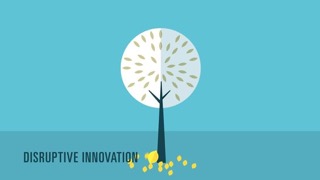Disruptive Innovation, a theory of confusion ?
Disruptive Innovation, a theory of confusion? What is “disruptive” is not necessarily “disruptive innovation”.
Twenty years after the introduction of the theory of disruptive innovation (or breakthrough innovation), Clayton Christensen, who originated it, revisits this theory through analyzes of its applications in the “Harvard Business Review Of January 2017.
Now somewhat mainstream, the disruption has sometimes become a fashion effect, a grail for any innovator, find the” killer app” is a sort of paradoxical injunction in big companies, who dream of it while limiting disruptive ideas that disturb Organization and established processes.
Christensen therefore returns to the abuses of interpretation of disruptive innovation. The example of Uber is masterfully described “Uber a Disruptive Business? “.
Recalling how this company, which has grown tremendously by operating in more than 60 countries and having carried out a fund raising that valorizes the company to 50 billion, is a success that has revolutionized the business of taxis.
“But has it caused a breakdown in this sector? According to the theory, the answer is no”. Uber’s financial and strategic success is not enough to qualify his innovation approach as a break even though the term is almost systematically applied to it.
Christensen justifies in two arguments the reason why Uber is wrongly classified among the examples, yet successful, of disruptive innovation.
The first reason is that “innovation breaks down in low-end markets or in new markets.” Neither of them corresponds to Uber’s case.
Uber has certainly helped to increase the volume of demand but the company has built its position first on the traditional market to then attract the segments historically neglected.
The second reason is that “innovation breaks have no hold on the traditional clientele as long as the quality is not up to the standards of this category”.
But most of the components of Uber’s strategy seem to be supporting innovations. Uber’s quality of service is rarely described as inferior to that of existing taxis, many even agree that it is superior. Moreover, the services are reliable and punctual, prices equal or lower than those of the traditional companies.
In the end one can ask the interest to know if Uber is disruptive or not? The fact that the appearance of Uber has sown trouble in the taxis market has a disruptive effect but that doesn’t constitute in itself a disruptive innovation nevertheless.
The unavoidable rules of disruption theory according to Christensen are 4:
1) the disruption is a process
2) the business models of the “disrupters” are often very different from those of established societies
3) certain innovations of rupture Are successful and others not and finally
4) “the mantra” create the break or suffer the may be bad advice “.
Obviously the importance of determining whether one is in disruption or not intervenes on the strategic mode of piloting and on the type of strategic choice between “driving support” and “driving disruptive”.
A bon entendeur salut!


Leave a Reply
Want to join the discussion?Feel free to contribute!